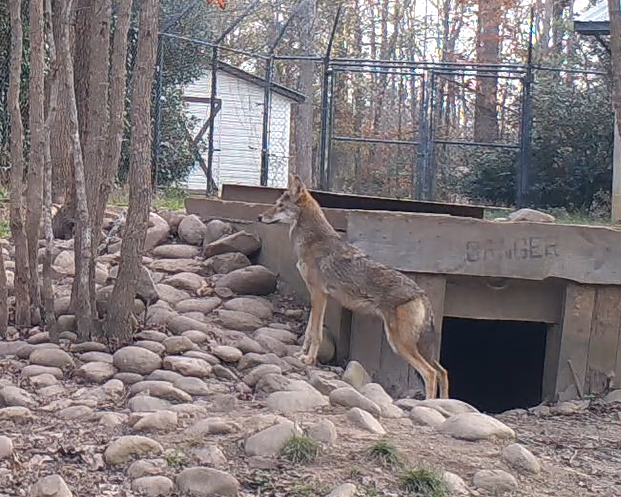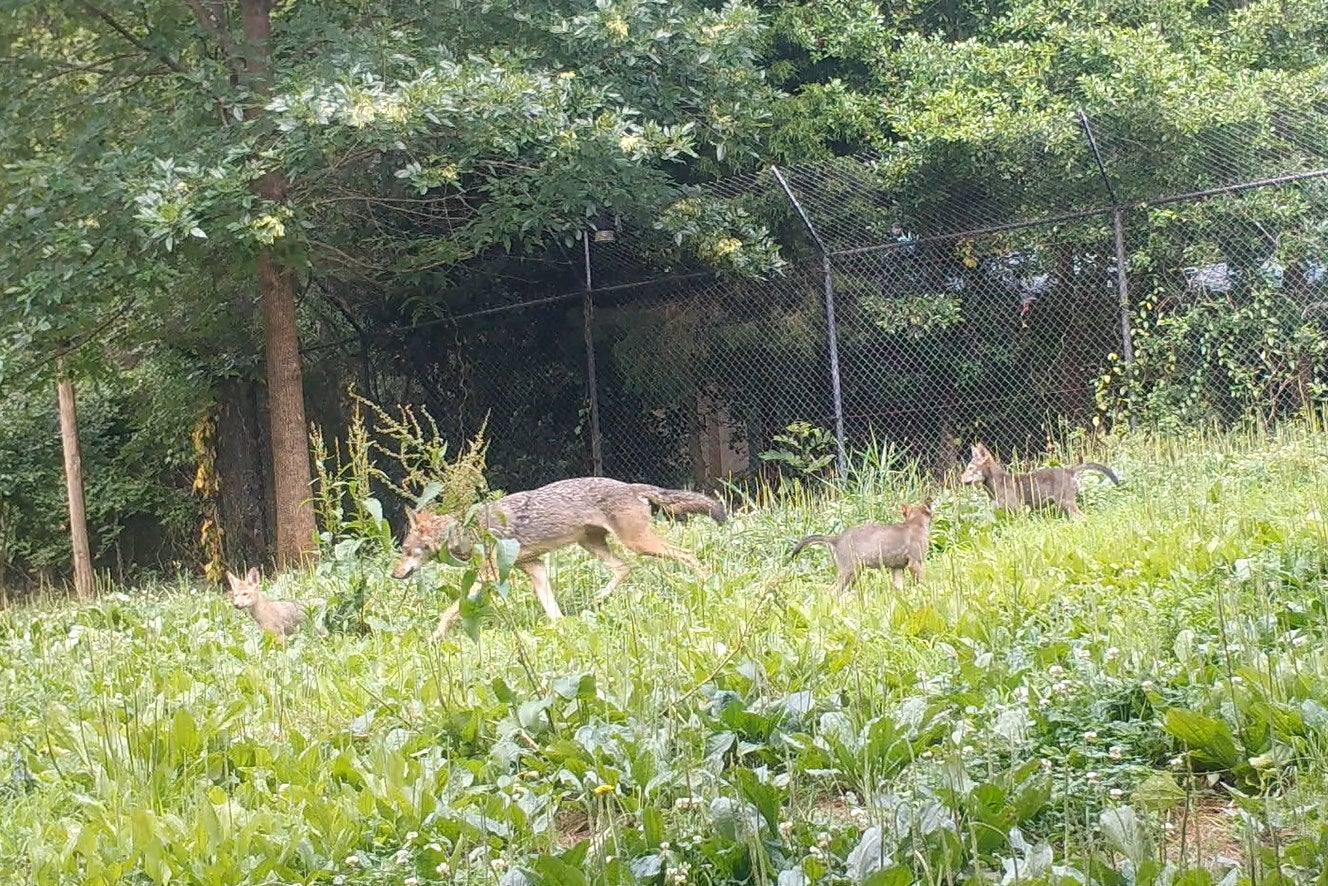Red wolves have been busy growing up at Dan Nicholas Park
Published 12:10 am Tuesday, December 1, 2020
By Carl Blankenship
carl.blankenship@salisburypost.com
SALISBURY — The red wolf is one of the most critically endangered species in the United States, with only about 20 individuals left in the wild. All of them live in North Carolina, and several have been busy growing up at Dan Nicholas Park.
Six months ago, Dan Nicholas Park welcomed a litter of red wolf pups from a captive breeding pair that includes two females and one male, though one female, Phoenix, was adopted. This was the second litter of pups for the park — the first was in 2007.
The park and its Rowan Wild program are part of the captive breeding program for the rare canine, which shares efforts between 43 facilities to rebuild a captive population with the hope to eventually reintroduce some wolves to the wild. The Post first wrote about the pups shortly after they were born in May. At that point, the other two, Jade and Jasper, had not been named yet.
At six months, the pups are not not far off from being adult wolves. They recently had their six-month checkup.
Sleepy pups with no teeth are not much of a concern for veterinarians and zookeepers, but six months later they are big and have all the teeth they need. Megan Cline, a naturalist and animal care specialist at Rowan Wild, said checking up on the animals is something staff has to do carefully now.
Generally, the wolves will run into their den boxes when staff enters the enclosure. Staff will enter the enclosures, put muzzles on the wolves. Then, a veterinarian will sedate them.
In the wild, red wolves are monogamous, finding partners and raising pups that will then split off to start their own families. The breeding program moves wolves around as a matter of practicality and to keep the genetic strength of the species going.
Phoenix has picked up the nickname “daddy’s girl” because she is often seen playing with the captive family patriarch, Clay. Clay interacts with the pups more than the mother Magma does, often starting play with the group. Most of the family’s interactions have been caught on trail cameras set up in enclosures, because during the day and when people are around the wolves are nowhere to be seen.
Cline said working with these animals is more of an eye opener than it was in 2007 because reintroduced numbers at that point were looking promising. Now, the wolves are more endangered than ever.
Anyone hoping to get a glimpse of the wolves, young and old, is probably out of luck. The species is a shy animal that will generally stay away from humans.
Even zoo keepers have trouble getting a glimpse of the wolves out and about in the enclosure.
Cline contrasted this to the red wolf’s cousin, the coyote. Red wolves are apex predators in the wild, but coyotes have become wildly successful while red wolves have almost died out. The reason is coyotes are generalists, adapting to living near people in a variety of conditions, while red wolves do not.
Coyotes pose some other challenges for the wolves as well. They compete with them for food and the species can cross breed, producing sterile hybrid offspring.
“A coyote is a lot more bold,” Cline said.
Rowan Wild also has a new addition to celebrate its program courtesy of Weiler Woods for Wildlife, an organization run by husband-and-wife team Dale Weiler and Loti Woods.
Weiler is a wildlife artist who creates realistic sculptures depicting animals ranging from giraffe to the North Carolina native hellbender salamander. One of his pieces, “Just Settling In,” depicts a red wolf and her pup.
The original sculpture was carved from alabaster, but the organization has been making castings of it and donating them to programs that are part of the captive repopulation program. Rowan Wild was one of the latest recipients after Weiler and Woods visited the facility at Dan Nicholas last year and were impressed with the program. It went to the top of their list for a statue.
They said the statues are intended to be used for education and fundraising purposes. Weiler noted it is difficult to see the wolves in enclosures. So the castings give people the chance to fall in love with them when they visit.
The organization focuses on what Weiler and Woods describe as misunderstood wildlife. One case is the hellbender, a giant salamander native to North Carolina rivers.
The gooey amphibians, colloquially called snot otters, are harmless to humans, but grow to around two feet in length. Turning over a rock and finding a giant amphibian relaxing underneath can be a shock, but hellbenders are important indicators of stream health and they won’t hurt you.
Weiler and Woods were installing a casting of a hellbender statue at the North Carolina Zoo in Randolph County when they first heard about the wolves.






